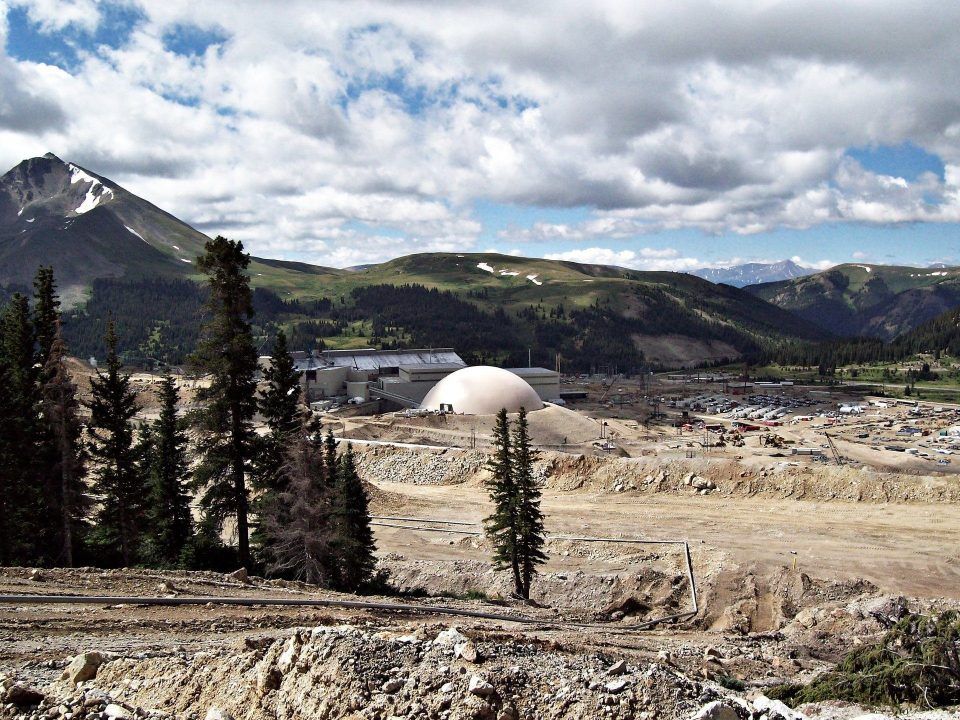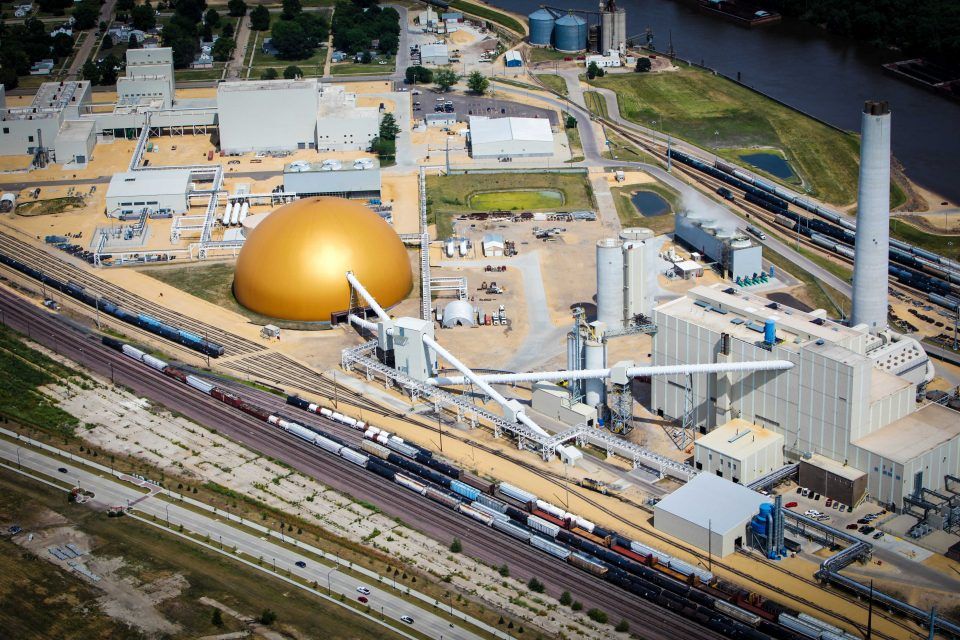Durability. Innovative foundation systems. More storage in a smaller footprint. And simpler product loading and unloading. These benefits have been enticing coal, copper, limestone, molybdenum, potash, bentonite, and other mining companies to choose dome storage for decades. And with systems increasing in sophistication all the time, companies who select a dome invest in longevity too.
Two bulk-storage options dominate the mining industry today: domes and flat storage (warehouses). When choosing a storage facility, companies should consider necessary capacity, site conditions, stored-product requirements and features built into the two options.
Space requirements and storage ability
The first Dome Technology domes were hemispherical—they required a large footprint, and their diameter was greater than their height. This model is still the go-to option for mining storage, best where capacity is king and land is inexpensive.
Domes store a large volume in a smaller footprint, stacking product deeper and taking up less property at the site. While some customers require three to five warehouses to store product, a single dome will likely accommodate the same amount of material. The double curvature of a dome lends itself to the ability to build up, rather than out, and the curve provides strength at all points of the structure. Because domes are monolithic structures, any forces interacting with the dome are distributed evenly through the shell rather than being concentrated to weak areas like corners or joints. This gives the dome a longer life cycle than a steel structure. Also, the dome’s ability to sustain large loads at the apex means ample support for head houses, fill conveyors and dust-collection systems.
Flat storage in general requires a larger footprint since product is usually stacked a maximum of 20 to 30 meters deep. Customers can expect a warehouse to utilize 100 to 150 percent more area than a dome holding a similar amount of product. Of course, each dome is planned with the stored product in mind and maximized for optimal capacity and product protection.

Case study: Climax Molybdenum
Climax Molybdenum needed ample storage at its Leadville, Colorado, mine, but there was a catch: To make this project economically feasible, the new structure had to utilize an existing conveyor system and be robust enough to hold the weight of the conveyor, headhouse and expected snowfall.
After seriously considering another type of dome, a monolithic concrete dome from Dome Technology was selected. A dome capable of storing 130,000 metric tons was built to accommodate an existing conveyor system, which was reassembled to feed directly into the apex.
Cost savings, then, were twofold: The customer reused an existing conveyor system, and additional costly support systems were not required to share the load. “Utilizing the existing equipment yielded tremendous savings for the customer,” Dome Technology operations manager Brent Hardy said.
The dome’s strength provided another advantage. With its location in a snowy clime, the structure was engineered to surpass a snow load of 5.27kN/m2 (110 PSF) while supporting the apex mechanical load. A different type of free-span, column-free storage facility could not support a similar load on its own.
“It’s very difficult to find a storage building that can bear the weight of the snow load and the conveyor load at the same time, but the dome can accomplish that,” said Dome Technology Vice President of Operations Dan South.
The project came with other challenges too. At an elevation above 3,353 meters (11,000 feet), weather conditions suitable for building would last just four months of the year; since a dome’s rapid construction process is ideal for quick construction, project managers and crews maximized workdays to expedite construction and complete the job within the amount of workable time.
Dust control was another concern, and the dome’s seamless storage capabilities would easily contain the product, reducing dust throughout the site and the minimizing the environmental impact.

Foundations
Flat storage is often built with concrete wall topped with a wood or steel structure. Because flat storage is constructed of different materials, any differential settlement will cause the “pieces” to separate. A deep foundation is often necessary unless the structure is built on firm ground.
As dome engineers have become savvier, foundation options have increased. A dome’s strength and geometry provide a tolerance for differential settlement—an important consideration for heavy materials.
Geotechnical engineering and site analysis ensure proper foundation performance. In contrast to a flat storage, the dome is continuously supported by the ring foundation; as a result, some differential settlement doesn’t adversely affect the structure, where some differential settlement in a flat storage is generally not acceptable.
In a dome, sometimes a ringbeam is the only necessary foundation system, and customers can save millions when a dome’s deep foundation is reduced or eliminated. But when more stability is required, companies have options:
- For sites with preferable or acceptable soil conditions, a ringbeam provides a shallow foundation alternative. Where applicable, the frost depth will determine the ringbeam’s depth, but usually the ringbeam is placed two to four feet in the ground.
- For sites where the top six to eight feet of ground is of less-than-ideal material, crews excavate the material, replacing it with controlled structural fill. This model allows for some settlement, but the amount will be within tolerable parameters for a dome.
- When the top 15 to 50 feet of soil is questionable, stone columns are often an option. First, crews use an auger to remove earth in about a 30-inch diameter hole until a more stable, soil-bearing layer is reached. Rock then fills the hole and is compacted, increasing the stiffness of the soil below the dome.
When deeper foundations are required, other systems are available. Dome Technology’s engineering team can identify the solutions most likely to work for a project.
By Rebecca Long Pyper for Dome Technology
Editor’s note: The preceding is an excerpt from an article published in the September 2021 issue of Global Mining Review.